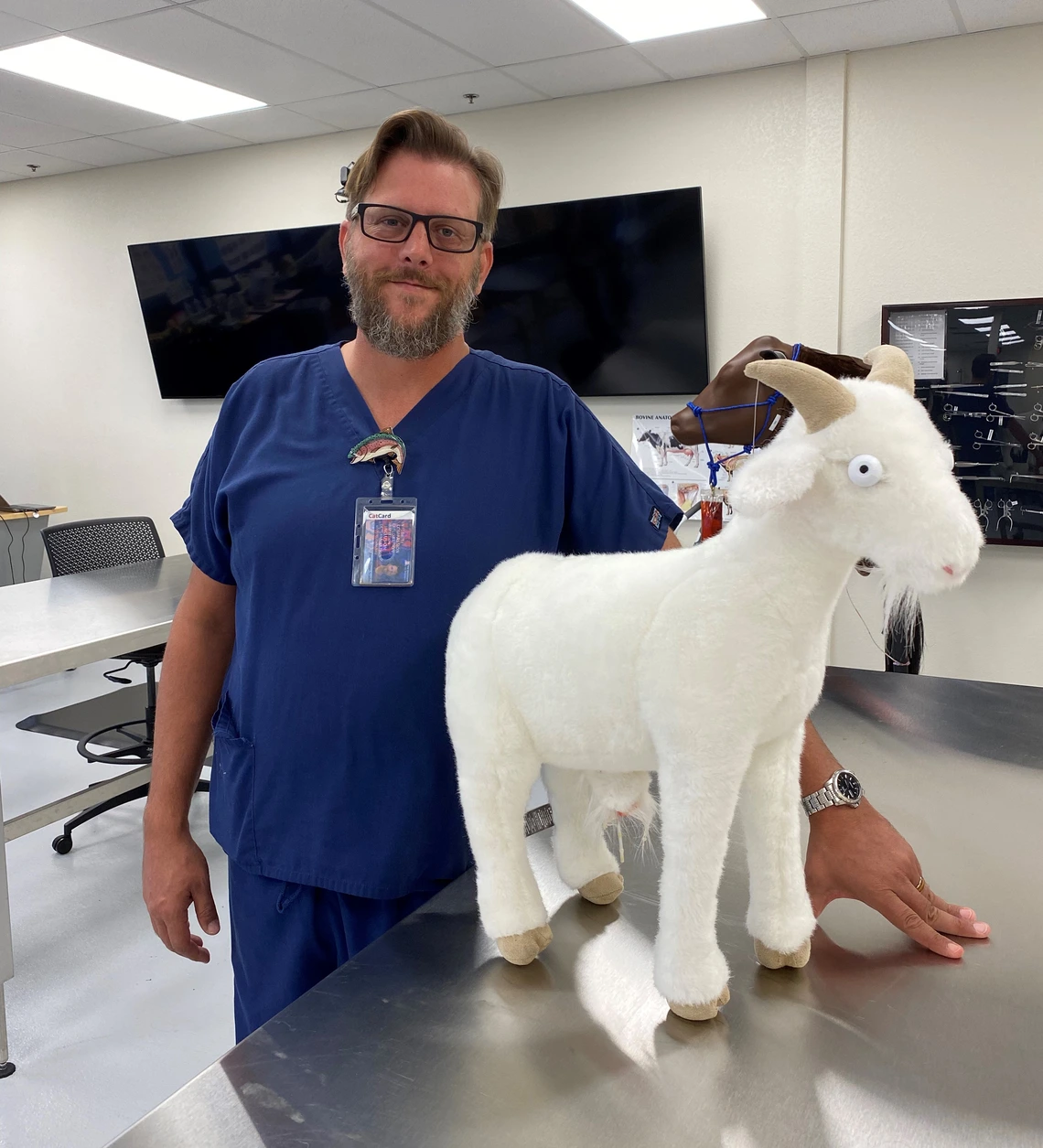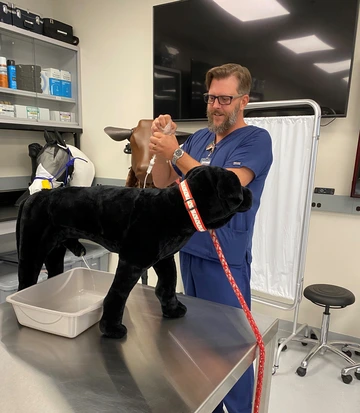The Messy Side of Veterinary Medicine
The University of Arizona College of Veterinary Medicine prepares students to roll their sleeves up and serve many practical—and sometimes messy—needs.

A common misconception about veterinary medicine is that it’s all puppies and kittens. While vets get to snuggle and care for some adorable animals, veterinary medicine isn’t always so glamorous. The University of Arizona College of Veterinary Medicine prepares students to roll their sleeves up and serve many practical—and sometimes messy—needs. Part of this preparation comes from our clinical skills team, which comprises professors and veterinary technicians eager to impart their expertise to future veterinary professionals. Our veterinary technicians come to our program with years of hard-earned experience. Their focus on education continually drives them to improve hands-on learning opportunities for students. Often, these educational enhancements supply practice in carrying out tasks in which vet techs know students will need proficiency.
Creativity, flexibility and a willingness to embrace all types of examinations are key in helping students develop the necessary skills. CVM Veterinary Technician Joseph Scarber knows that with exposure to new techniques, students can learn to care for animals more effectively. With over 20 years of experience in the veterinary medical career field, Scarber has plenty of insight to share with students. He stated,
“I’ve always enjoyed the teaching and training aspect of the job and have found a great deal of satisfaction doing it full time with future veterinarians. I enjoy seeing the 'lightbulb moment’ when a student grasps the subject we are teaching.”
Some animal health issues are simple to identify if a veterinarian knows the key signs. Goats, for example, can develop crystals in their urine. This condition can be life-threatening if the animal cannot pass the crystals, which can become lodged in the pizzle, a tubelike structure through which a male goat passes urine. Scarber crafted a model of a male goat experiencing urinary crystals, allowing students to observe the classic signs that crystals may be the cause of the goat’s distress. In addition to displaying signs of distress, indications include passed crystals in the hair surrounding the area and inflammation or swelling in the area. The model displays these signs, providing exposure to the issue and a helpful visual point of reference for future veterinarians to recall in the field, diagnose quickly, and work to save the animal’s life.

Models created by our veterinary technicians also supply practice carrying out tasks essential to animal health. Honing skills on realistic models gives students the chance to develop a mental order of operations to follow. When students face the same issues with live animals, they know where to focus and what to do first, equipping them to jump into action when necessary. Scarber recognized that although vet techs gain ample experience with tasks like urine sample collection, some students enter veterinary school with limited animal experience, or their animal experiences do not include the hands-on skills in which veterinary technicians specialize. He decided to create a model of a male dog with a full bladder, using an IV bag full of water to simulate urine. Students practice collecting the sample and keeping the animal positioned properly. This basic skill is among many that students will need to develop to carry out their veterinary responsibilities successfully.
Another such skill is gland expression. When fluid collects in the glands in a dog’s rectum, the animal can become uncomfortable and risks infection. To help students develop a mental plan of action, our veterinary technician team developed a model that simulates the placement and pressure necessary to express the glands and support the animal’s health. Models like these empower students to take an active role in their learning and become confident in their clinical skills before applying them in real-world situations.
Although these tasks may not be glamorous—and can possibly make the not-so-medically minded individual blush, they are essential to animal health. The College of Veterinary Medicine’s vet tech team is always ready to collaborate and share the skills they have developed over their years of experience. This willingness to put themselves in our students’ shoes and understand their needs is part of what makes our veterinary technician team outstanding. Scarber shared,
“Having a background in the practical application of the skills we are teaching helps me explain scenarios where these skills will be needed in the student’s careers. The models we create require a certain degree of anatomical and medical knowledge to appropriately reflect the skills we are trying to teach.”
Our vet techs continually innovate, displaying creativity and practical expertise that brings students a breadth of knowledge that they might otherwise rely on trial and error to develop. Students benefit because they first learn about the animal and its biological systems and then apply their knowledge hands-on in the clinical skills classroom. This applied animal knowledge gives our students an edge as they enter clinical settings and allows them to become proactive day-one-ready veterinarians prepared to get their hands dirty and provide first-rate animal care.
